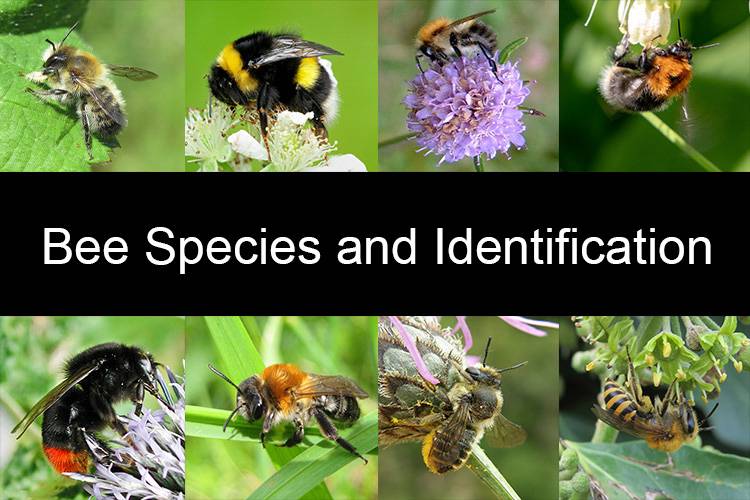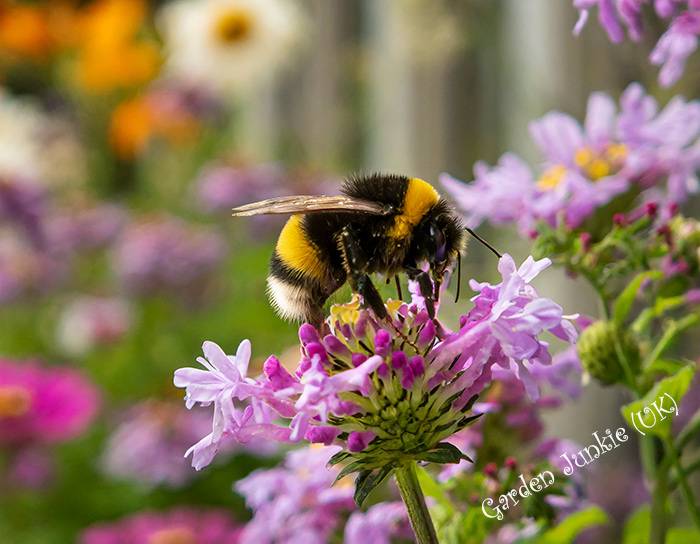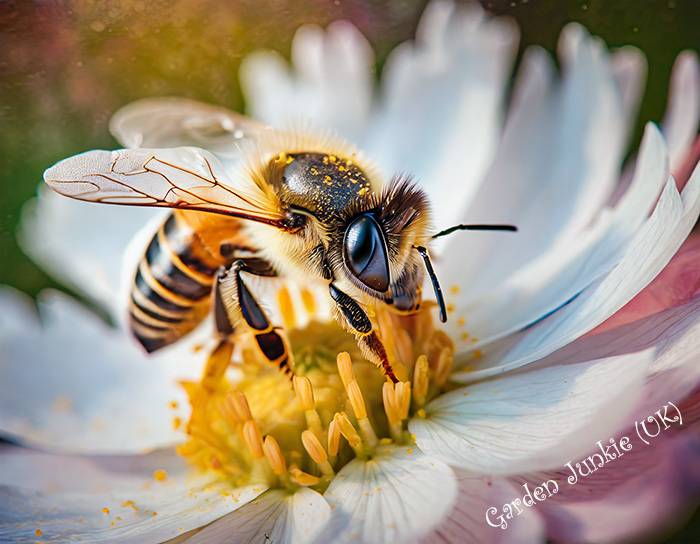Beautiful Plants For Your Interior
Bee Species Identification: A Beginners Guide

Welcome to the captivating realm of bees, where nature’s tiny workhorses orchestrate the delicate dance of pollination, ensuring abundant flowers, fruits, and vegetables that sustain our planet’s biodiversity and nourish our lives. Embark on a journey of discovery as we delve into the fascinating world of bee species, unravelling their remarkable diversity and intricate characteristics.
Bee Species and Identification: How to Identify Different Types of Bees
Within the grand orchestra of nature, bees play a pivotal role, their buzzing wings and pollen-laden bodies ensuring the reproductive cycle of countless plants. This remarkable insect order, known as ‘Hymenoptera’, encompasses a diverse array of species, each with its unique traits and ecological niche. The superfamily ‘Apoidea’ is a major group within the Hymenoptera, which includes two traditionally recognised groups, the “sphecoid” wasps, and the bees.
Bees are important pollinators that play a vital role as we shall see, being part of the crucial inhabitants of the wildlife in our gardens and the larger ecosystems generally. There are over 270 species of bees in the UK, which includes 24 species of bumble bees. Understanding bee species and identification is crucial for beekeepers, conservationists, and anyone interested in learning more about these fascinating insects.
Identifying bee species can be challenging, but there are several distinguishing features to look out for, such as their body size, colour, and shape. Some of the most common bee species in the UK include honeybees, bumblebees, and solitary bees. Each of these species has its unique characteristics and behaviours that make them important pollinators in their own right.
By learning more about bee species and identification, individuals can better understand bee behaviour and life cycle, as well as take steps to support bee conservation efforts. Whether you are a beekeeper, gardener, or simply interested in learning more about these fascinating insects, understanding bee species and identification is an important first step.
Key Takeaways
- Bees play a vital role in the ecosystem as pollinators.
- There are over 270 species of bees in the UK, each with unique characteristics and behaviours.
- Understanding bee species and identification is crucial for beekeepers, conservationists, and anyone interested in learning more about these fascinating insects

Bee Species and Identification: Bumble Bees Have Stout, Hairy, Robust Bodies – Usually With Black and Yellow Striped Colouration and a White/Red Tip.
Understanding Bees
Bees are one of the most important pollinators in the world. They are responsible for pollinating many of the fruits and vegetables we eat, making them an essential part of our ecosystem. We will explore the different types of bees, their habitats and the role they play in pollination
Types of Bees
There are over 270 species of bees in the UK, and they can be divided into three main categories: honey bees, bumble bees and solitary bees. Honey bees are the most well-known and are kept by beekeepers for their honey production. Bumble bees are larger and have a furry body, making them excellent pollinators. Solitary bees are smaller and live alone rather than in colonies. There are also cuckoo bees, which lay their eggs in the nests of other bees.
Bees That Can Often Be Seen In The UK
(In Alphabetical Order)
| Bee Name | Scientific Name | Best Time To See | Bee Category |
|---|---|---|---|
| Buffish Mining Bee | Andrena nigroaenea | May to July | Solitary Bee |
| Buff-tailed Bumblebee | Bombus terrestris | All Year Round | Bumblebee |
| Common Blue Mason Bee | Osmia caerulescens | April to September | Solitary Bee |
| Common Carder Bee | Bombus pascuorum | March to September | Bumblebee |
| Hairy-footed Flower Bee | Anthophora plumipes | March to June | Solitary Bee |
| Honeybee | Apis mellifera | All Year Round | Honey Bees |
| Leafcutter Bee | Megachile centuncularis | June to August | Solitary Bee |
| Red-tailed Bumblebee | Bombus lapidarius | March to September | Bumblebee |
| Tawny Mining Bee | Andrena fulva | March to June | Solitary Bee |
| Tree Bumblebee | Bombus hypnorum | April to July | Bumblebee |
| White-tailed Bumblebee | Bombus lucorum | March to October | Bumblebee |
| Wool Carder Bee | Anthidium manicatum | April to September | Solitary Bee |
Bee Species and Identification: Bees That Can Be See in The UK
Bee Habitats
Bees play a crucial role in pollination, which is the process of transferring pollen from one flower to another. This process is essential for the reproduction of many plants, including fruit and vegetable crops. Without bees, our food supply would be severely impacted, and ecosystems would be disrupted.
Bees can be found in a variety of habitats, from gardens to coastal areas, farmland and wildflower meadows. Honey bees are often kept in hives by beekeepers, while bumble bees and solitary bees build their nests in the ground, in trees or in other small cavities. It’s important to provide bees with a variety of habitats and food sources to ensure their survival.
Understanding the different types of bees, their habitats and the role they play in pollination is crucial to protecting these important pollinators. By providing bees with a variety of habitats and food sources, we can help ensure their survival and the health of our ecosystems.
Identifying Bee Species
Bee identification can be a challenging task for beginners. However, it is essential to know the different species of bees, as they play a crucial role in pollination. The identification of bee species relies on key factors such as shape, size, colour, and habitats. Here we will cover the different types of bees and how to identify them.
Bumblebees
Bumblebees are one of the most common types of bees found in the UK. They are large, fuzzy, and have distinct black and yellow stripes. Bumblebees can be identified by their long tongues, which they use to collect nectar from flowers. There are many different species of bumblebees, including the early bumblebee, tree bumblebee, and red-tailed bumblebee.
Solitary Bees
Unlike bumblebees, solitary bees do not live in colonies. Instead, they live alone or in small groups. Solitary bees come in various sizes, shapes, and colours. Some of the most common types of solitary bees include mason bees, hairy-footed flower bees, and mining bees. Mason bees are small and black, while hairy-footed flower bees are larger and have a distinctive orange-brown colour. Mining bees come in different colours, including the red mason bee, tawny mining bee, and ashy mining bee.
Honeybees
Honeybees are social insects that live in colonies and are known for their honey-making abilities. They are smaller than bumblebees and have a more slender body. Honeybees are usually brown or black, with yellow or orange stripes on their abdomen. They can be found in a variety of habitats, including gardens, fields, and forests.

Bee Species and Identification: A Honeybee With a Black or Brown Body and Orange or Yellow Stripes
Mimics and Lookalikes
Many insects mimic or look like bees, including wasps, hornets, flies, and hoverflies. European hornets and Asian hornets are two examples of insects that look like bees. They have a similar body shape and colouration to bees but are larger. Bee-mimicking hoverflies are another common insect that looks like bees. They have a distinctive yellow and black striped pattern, similar to that of bumblebees.
Bee identification is essential for anyone interested in the conservation of these vital pollinators. By understanding the different types of bees and how to identify them, you can help protect their habitats and promote their survival.
Bee Behaviour and Life Cycle
Bee behaviour and life cycle can vary depending on the species of bee. However, some general patterns can be observed across different types of bees.
Bee Colonies and Swarms
Honeybees and bumblebees are social bees that live in colonies. A colony can contain thousands of bees, including a queen bee, drones, and worker bees. The queen bee is responsible for laying eggs, while the worker bees are responsible for foraging for food, building and maintaining the nest, and caring for the young.
When a colony becomes too large, it may split into two or more colonies through a process called swarming. Swarming is when a large group of bees, including the queen bee, leave the original colony to start a new one.
Nests and Habitats
Different species of bees have different nesting habits. Honey bees and bumblebees typically nest in cavities, such as tree hollows or abandoned animal burrows. Solitary bees, on the other hand, nest in a variety of locations, including dead wood, the ground, and even in the stems of plants.
Some bees, such as mason bees, will build their nests using mud or other materials. Others, such as leafcutter bees, will use pieces of leaves to construct their nests.
Feeding and Foraging
Bees feed on nectar and pollen, which they collect from flowers. Nectar provides bees with carbohydrates, while pollen provides them with protein. Bees play a crucial role in pollinating plants, which is essential for the production of many fruits and vegetables.
Worker bees will forage for food, often travelling several kilometres from the nest to find flowers. They will communicate the location of food sources to other bees in the colony through a series of dances and pheromones.
Bee behaviour and life cycle can vary depending on the species of bee. Social bees live in colonies, while solitary bees live alone.
Conservation of Bees
Threats to Bees
Bees, including bumblebees and solitary bees, face numerous threats to their survival. One of the biggest threats is the loss of habitat due to climate change, grazing, and urbanisation. Pesticides, diseases, and parasites also pose significant threats to bee populations. Additionally, the decline of wildflower meadows and hedgerows has hurt bee populations.
Conservation Efforts
Various organisations and initiatives are working to protect bee populations. The Bumblebee Conservation Trust and BWARS are two examples of organisations that focus on bumblebee and solitary bee conservation. The Wildlife Trusts also work to protect bee populations through habitat restoration and management.
Individuals can contribute to bee conservation efforts by donating to these organisations or volunteering as a beekeeper or habitat managers.
Role of Humans
Humans play a crucial role in bee conservation efforts. One way humans can help is by reducing their use of pesticides and supporting organic farming practices. Planting wildflowers and or creating bee-friendly flower habitats in gardens and public spaces can also help support bee populations. Additionally, humans can support bee conservation efforts by advocating for policies that protect bee habitats and limit pesticide use.
FAQs
Are There Any Free Bee Identification Charts Available For The UK?
Yes, there are free bee identification charts available in the UK. The Friends of the Earth website provides a beginner’s guide to bee identification. A bee identification chart
What is The Difference Between Bees And Wasps in The UK?
Bees and wasps are often confused, but there are some key differences. Bees are generally hairy and have a more rounded body shape, while wasps are smoother and more slender.
Bees feed on nectar and pollen, while wasps are predators and feed on other insects. Bees are important pollinators, while wasps play a role in controlling pest populations.
Conclusion
Ensuring the correct bee species and identification of these little flying insects is crucial for understanding their ecological roles and conserving their populations. By using a combination of morphological, behavioural, and genetic characteristics, researchers and enthusiasts can accurately classify and study different bee species.
This knowledge can contribute to efforts aimed at protecting bee diversity and maintaining healthy ecosystems. Additionally, advancements in technology, such as image recognition and DNA analysis, continue to enhance the accuracy and efficiency of bee identification. Overall, ongoing research and collaboration within the scientific community are essential for furthering our understanding of bee species and their significance in the natural world.
